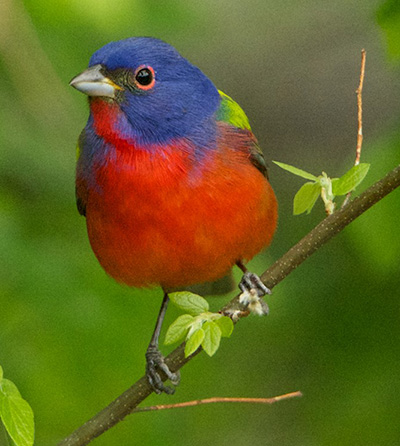Native Plant Conservation Campaign News: Gardeners should prioritize native plants to support songbird populations, Smithsonian Institute reports
January 3, 2019 (Happy New Year!)
 A study coauthored by NPCC Advisory Board member Doug Tallamy has found that gardens dominated by nonnative plants undermine songbird populations. The study, published in October in the Proceedings of the National Academy of Sciences, determined that nonnative plants fail to support the type and quantity of insects that the birds need for food. Even a small percentage of nonnative plants was found to disrupt nesting success.
A study coauthored by NPCC Advisory Board member Doug Tallamy has found that gardens dominated by nonnative plants undermine songbird populations. The study, published in October in the Proceedings of the National Academy of Sciences, determined that nonnative plants fail to support the type and quantity of insects that the birds need for food. Even a small percentage of nonnative plants was found to disrupt nesting success.Researchers examined gardens and yards in the Washington DC area and measured reproduction of Carolina Chickadees. They reported that only the yards with a plant composition made up of more than 70 percent of native plants were able to support enough chickadees to sustain a stable population.
“Because more than 90 percent of plant-eating insects only eat one or a few native plant species, the use of these [native] plants in landscaping is essential to ensure breeding birds have enough prey to eat. For the same reason, native plants are also likely critical for other resident birds, endangered species and migratory species — and not just in backyards on the East Coast.”, the Smithsonian Institute noted in a statement on the study.
Artificial suburban landscapes are prevalent across the U.S., and “…a gingko that you plant in D.C. and a gingko that you plant in L.A. are doing the same thing for bird conservation — nothing. By using native plants, we can provide food for not only our common North American species, but we’re also providing vital stopover habitat and resources for migratory birds during their perilous journeys.” Stated Desirée Narango, study author.
Because more than 80 percent of land in the contiguous United States is privately managed, it is crucial that gardeners and landscape designers increase their use of native plants so that birds, pollinators and other native wildlife can survive.
To find native plants suitable to your area, consult an online database, such as the Ecoregional Revegetation Application and vendor database, or the Audubon’s Native Plants Database or National Wildlife Federation’s Native Plant Finder.
You should also check with your local native plant society, botanic gardens, university botany departments, natural heritage programs, and/or other local botanical experts. See the NPCC Affiliates page to see native plant societies and botanic gardens near you.
Read the Smithsonian statement - Study Links Declines in Suburban Backyard Birds to Presence of Nonnative Plants
Photo (c) Doug Tallamy